14 SPECTACULAR African Birds to Discover
The African continent is home to an incredibly rich avifauna, shaped by a mosaic of habitats from vast savannas to dense equatorial forests. These birds, with their vibrant colors and fascinating behaviors, are symbols of African wildlife.
Discover the 14 SpeciesOn This Page
14 Iconic African Bird Species
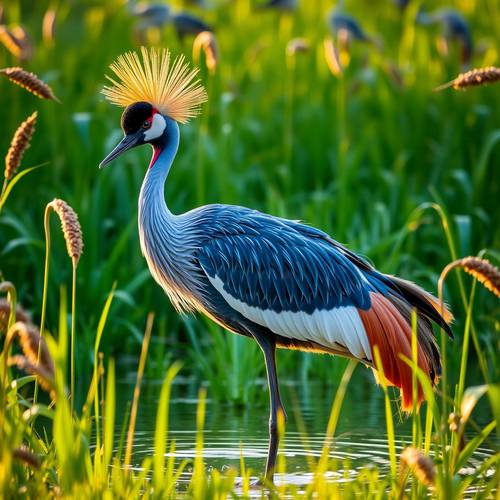
Grey Crowned Crane
Recognizable by its incredible crown of golden feathers, the Grey Crowned Crane is a graceful bird of wetlands and savannas, famous for its spectacular mating dances.
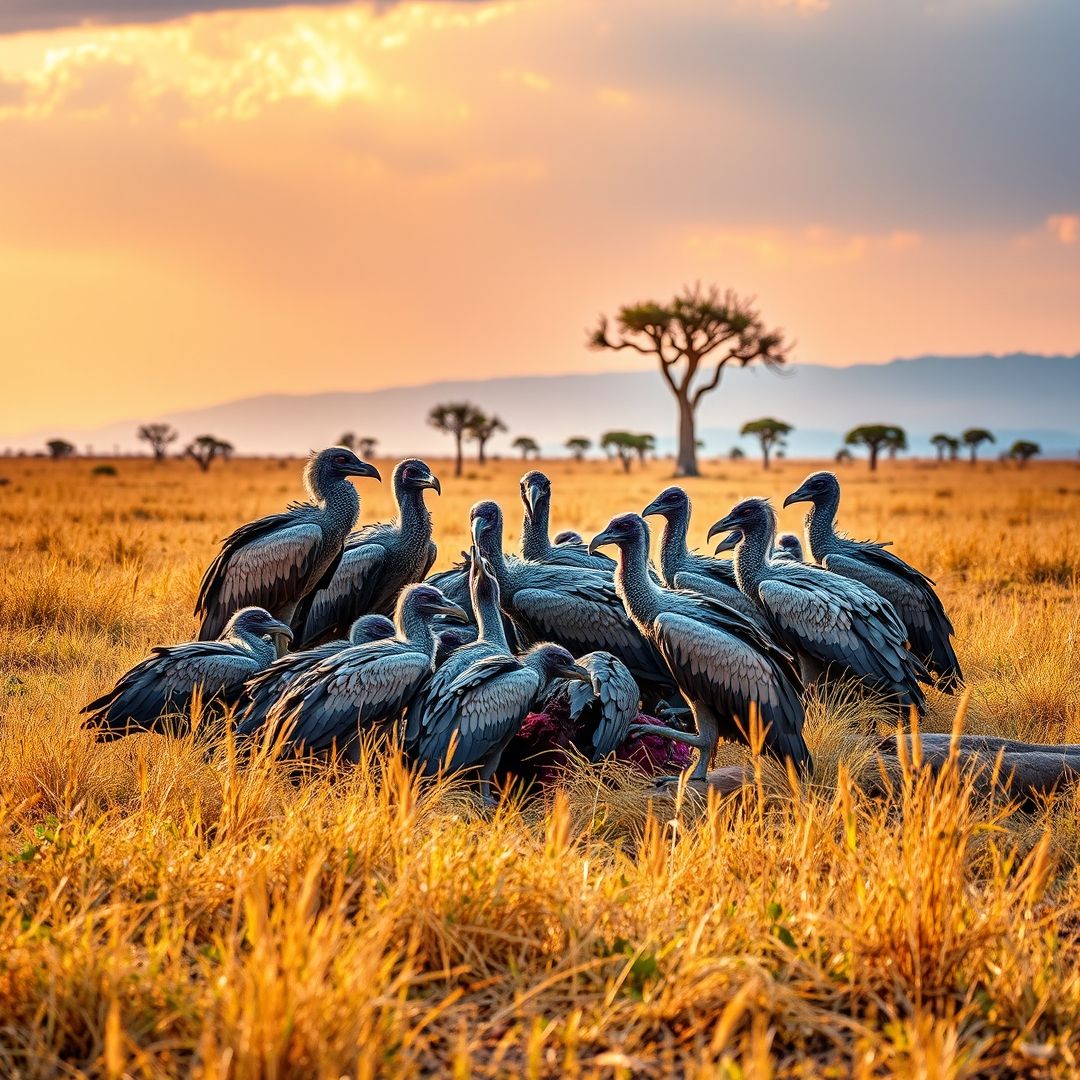
White-backed Vulture
This is the most common vulture of the savanna. Essential to the ecosystem, it cleans up nature by feeding on carcasses, often gathering in large, noisy groups.
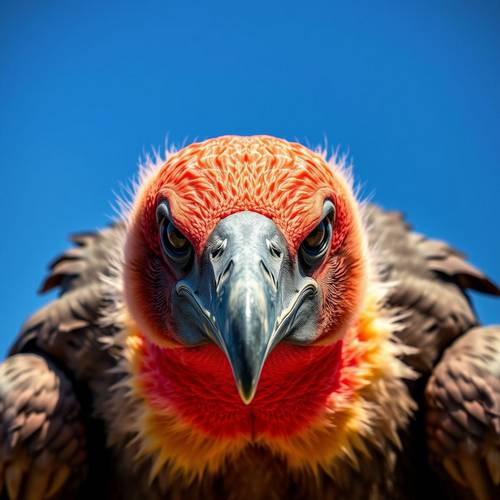
Lappet-faced Vulture
The king of vultures. With its large size and powerful bill, it dominates other scavengers. Its bare head with vibrant colors (pink, red, blue) is unique and impressive.
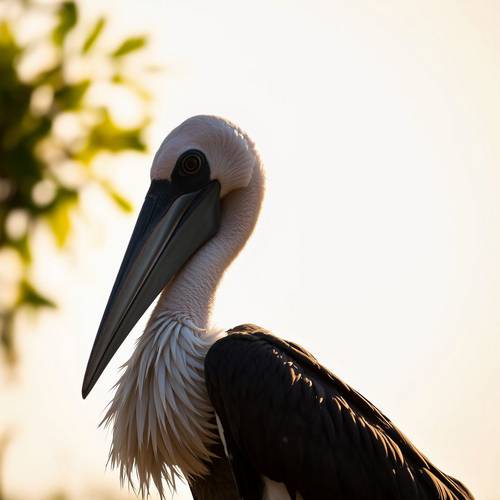
Marabou Stork
This large, funeral-looking wader is a vital scavenger. With its massive bill and bald head, it plays a crucial role as a cleaner in savanna ecosystems.
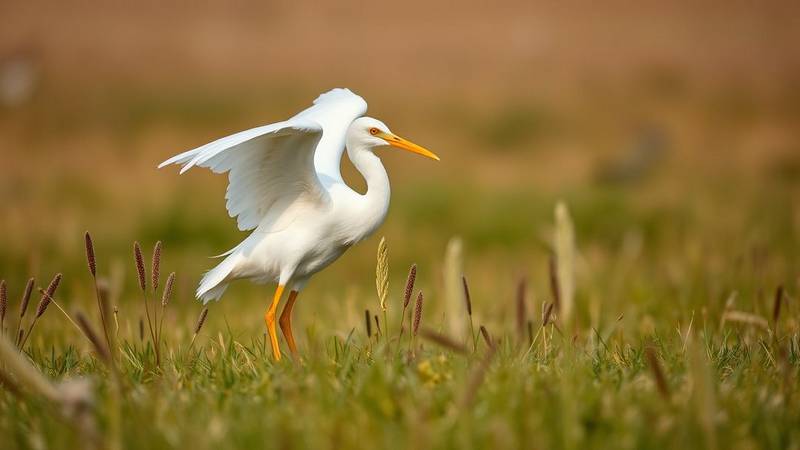
Cattle Egret
This small white heron is famous for following cattle and even tractors, catching insects disturbed by their movement. It has undergone a spectacular worldwide expansion.
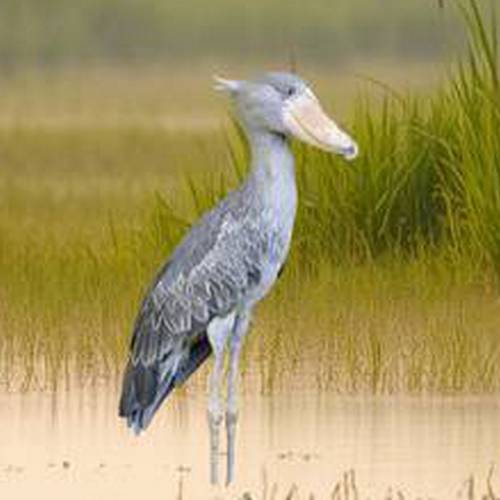
Shoebill
A prehistoric-looking bird, famous for its massive, shoe-shaped bill. It is a patient hunter that waits motionless in the dense swamps of central Africa.

Eurasian Spoonbill
A large, long-legged wading bird with all-white plumage, recognizable by its long, black, spoon-shaped bill. To feed, it sweeps its bill from side to side in the water.
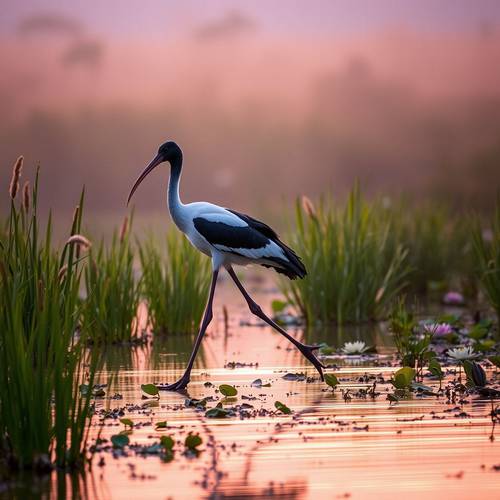
African Sacred Ibis
Worshipped in ancient Egypt, this wader with white plumage contrasting with its black head and neck, uses its long curved bill to probe mud for food.
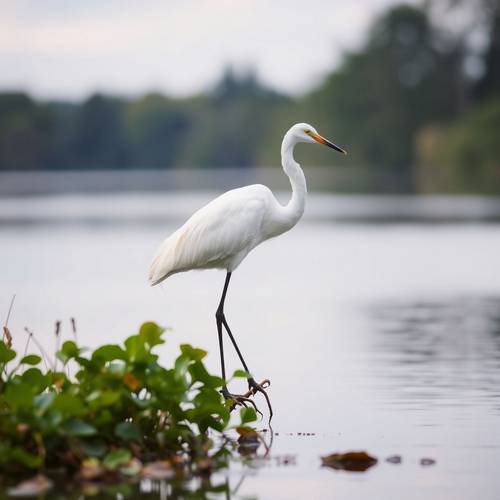
Little Egret
An elegant small white heron with a slender black bill, long black legs, and distinctive yellow feet. During the breeding season, it develops beautiful, long plumes on its head, chest, and back.
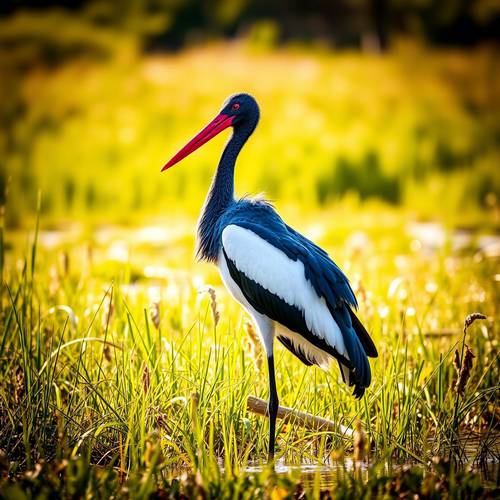
Saddle-billed Stork
This giant, solitary stork has an enormous bill, black and red with a yellow "saddle." It is a powerful predator of wetlands, hunting fish and amphibians.
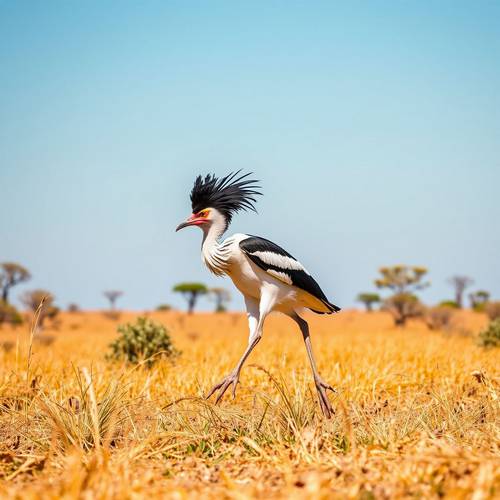
Secretarybird
This unique, eagle-like bird hunts on the ground, stomping on snakes with its long legs. Its crest of feathers behind the head gives it the appearance of a clerk.
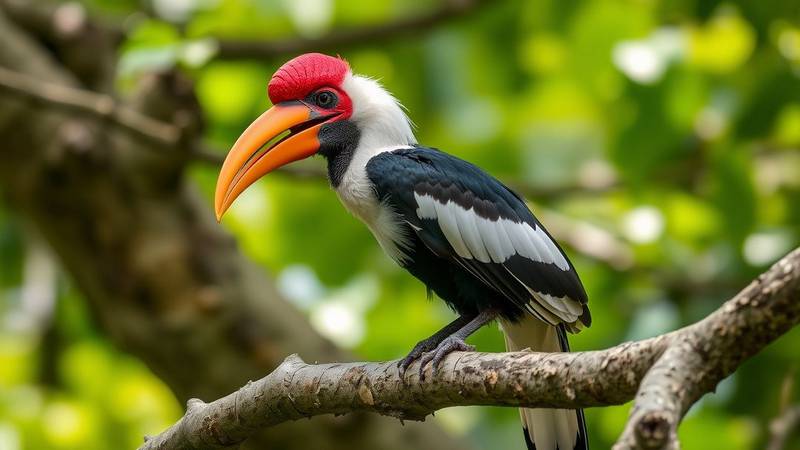
Red-billed Hornbill
Made famous by the character Zazu in "The Lion King," this small hornbill is very common in the savanna. The female seals herself in a tree cavity to incubate, fed by the male.

White-fronted Bee-eater
This bee-eater is a flying jewel. With its white forehead, red throat, and multicolored body, it offers a magnificent spectacle when hunting in groups over rivers.
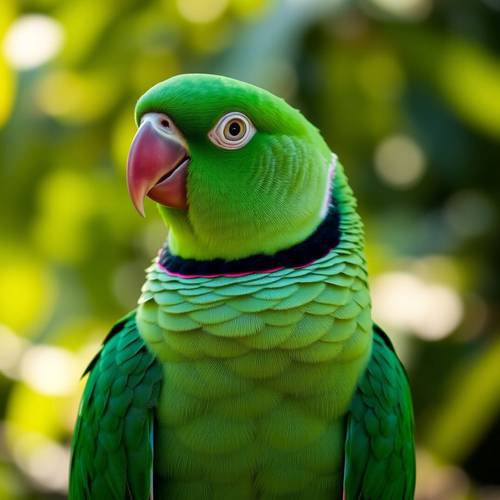
Rose-ringed Parakeet
Native to Africa and Asia, this intelligent bird with bright green plumage is known for the male's black and pink neck-ring. Highly social, it has also adapted to urban parks.
Why Is Africa a Bird Paradise?
Africa is home to exceptional avian biodiversity, with over 2,500 recorded species. This richness is explained by several factors:
- A mosaic of habitats: From the dense forests of the Congo Basin to the arid expanses of the Kalahari, the savannas of the Serengeti, and the wetlands of the Okavango, the continent offers a multitude of ecological niches.
- Climatic stability: Much of Africa enjoys stable climatic conditions, favoring resident species that do not migrate.
- Migratory crossroads: The continent is a wintering ground for hundreds of migratory bird species from Europe and Asia, such as swallows and warblers.
- Ancient evolutionary processes: Africa is an ancient continent where many bird families have evolved and diversified uniquely, giving rise to endemic species found nowhere else.
Fascinating Behaviors of African Birds
African birds have developed some of the most amazing survival and breeding strategies in the animal kingdom:
- Complex weaving: The male Village Weaver builds intricate hanging nests from grass strands to woo females, who choose the best architect.
- Ground hunting: The Secretarybird, a terrestrial raptor, specializes in hunting snakes, which it kills by stomping on them with its powerful legs.
- Brood parasitism: The Greater Honeyguide leads humans (and honey badgers) to wild beehives to feed on the wax, while the Dideric Cuckoo parasitizes the nests of other species.
- Voluntary imprisonment: The female Hornbill seals herself in a tree hole with her clutch, leaving only a slit through which the male feeds her for weeks, protecting them from predators.
A Safari Guide's Tip
For an unforgettable birdwatching experience in Africa, the secret is to focus on "life magnets": water sources. At dawn and dusk, the banks of a river or the edges of a waterhole become a hub of intense activity. This is where birds come to drink, bathe, and hunt insects.
Listen carefully. You will often hear a bird long before you see it. The harsh call of a hornbill or the flute-like song of a bee-eater are valuable clues. Stay quiet, move slowly, and the magic of the African bush will reveal itself to you.
Birdwatching Safaris: Where to Go in Africa?
Planning a bird-focused safari can be a memorable experience. Certain countries and parks are particularly renowned:
- Uganda: Known as the "Pearl of Africa," this country is home to over 1000 species, including the rare Shoebill in the Mabamba Swamps.
- Botswana - Okavango Delta: An aquatic paradise. On a mokoro (traditional canoe), you can quietly approach fish eagles, jacanas, and giant kingfishers.
- Tanzania - Serengeti National Park: Beyond the Great Migration, the plains are home to ostriches, bustards, and the impressive Secretarybird.
- South Africa - Kruger National Park: Incredible density and diversity, featuring the "Big Six" of birding (Southern Ground Hornbill, Martial Eagle, Pel's Fishing Owl, Lappet-faced Vulture, Grey Crowned Crane, and Kori Bustard).